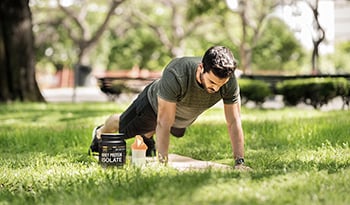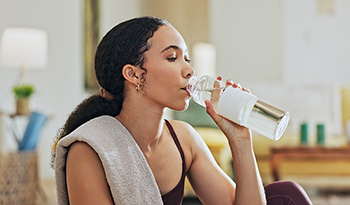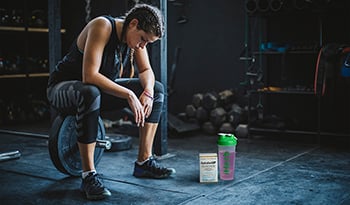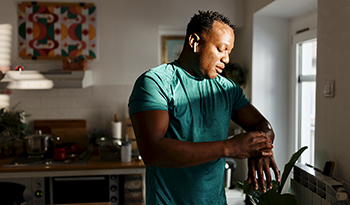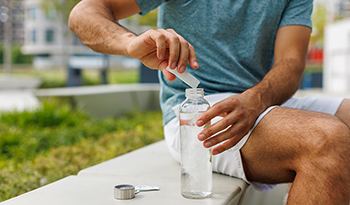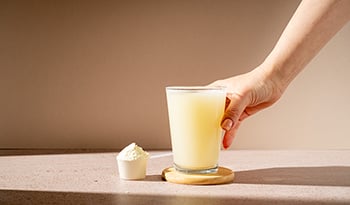Knee Pain? Try These 5 Steps To Relieve Discomfort
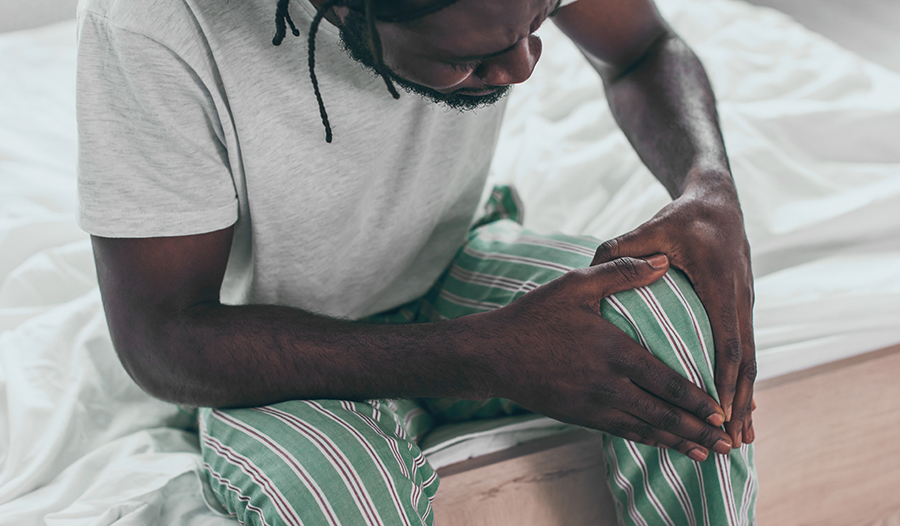
Knee pain and discomfort can be debilitating at times, and terribly frustrating to deal with. The knees can experience times of discomfort due to daily wear and tear and aging, along with pushing our fitness capabilities. There are different forms of knee discomfort, and generally, the discomfort experienced is individual to one’s life.
Instead of thinking of knee pain as a be-all-end-all, it’s time to consider what we can do to work around it, but still make strategic and healthy progress. For example, far too often individuals experience knee discomfort and instantly stop moving, but that’s actually the last thing we should do. Motion is medicine and without continuous movement and exercise within our means, we can actually set ourselves back further.
So when beginning to feel knee discomfort for whatever reason, it’s important to recognize that it’s a sign to adapt and be more strategic with movement - not a sign to stop everything. In this article, we’ll lay out a step-by-step guide to alleviating knee pain.
What Is Knee Pain?
First off, let’s discuss what knee pain actually is. Pain in itself is a complex, individual experience and no two levels of discomfort are created equal. For example, pain is often associated with damage, but it might not actually resemble that in the body. In some cases, pain can be a learned experience and the body may be interpreting external feedback as a protective mechanism, and not necessarily as a sign of physical damage to tissue.
A perfect example of this would be someone who has previously injured their knee performing a certain activity, then once they rehab and get back on their feet to full strength, they start experiencing pain again when performing that same activity that hurt them the first time. Even though they didn’t experience a new injury or acute damage to their tissue, they’re experiencing pain. This complex interaction makes working around knee pain slightly more complicated.
If you’re experiencing knee discomfort, then it’s important to assess and objectively ask yourself where the pain might be coming from. At the end of the day, knee discomfort is something that should be worked on and around and not completely ignored to the point in which you limit natural movement and ranges of motion.
5 Steps to Alleviate Knee Pain
In this step-by-step guide, we’re going to focus on multiple attributes that could be contributing to knee discomfort. Very rarely is knee discomfort solely due to the knee, but actually a culmination of factors that are triggering external feedback that is then perceived as pain.
1. Work On the Feet
To kick off the first step for working around knee pain is to assess and work on the feet. Oftentimes, the plantar-fascia can get tight, which can then cause compensations in movement patterns. If we’re constantly compensating in a way that forces range of motion, or puts the knee in positions that it’s not anatomically meant to go in, then there may be discomfort felt.
A good example of this would be someone who is constantly shifting their weight laterally or medially through the foot and ankle, which can then cause the knees to go valgus (inwards) or varus (outwards), and this repetitive movement pattern might put additional stress on the knees.
Your Gameplan:
- Apply light pressure with the edge of the foam roller on areas of the feet that feel tender and hold that pressure for 30 seconds. Oftentimes, the area just below the heel will be sensitive and need some attention if the plantar-fascia is tight.
- Self-massage for a few minutes. Sit down in a chair, bring one leg up and knead the foot with the thumbs, focusing on areas that feel tight or tender.
2. Assess the Calves
Now that you’ve spent some time on the feet, it’s time to work our way up to the calves. If the Achilles tendon and calves are tight, then there will likely be pressure on the bottom of the kneecap due to one’s range of motion being limited.
Whether you’re working out or simply moving throughout your day, tight calves can wreak havoc on the knees due to limiting natural and healthy range of motion. This becomes especially important to be mindful of when loading the body with weight as well because if the calves are limiting range of motion, then something will need to compensate and that will often cause knee discomfort.
Your Gameplan:
- Roll the calves. Take a foam roller and apply pressure on areas of the calves that feel tight. Hold it there for 30 seconds, then work through ankle dorsi and plantar flexion while holding that same position. You can also rock the leg from side-to-side on the tender area for 30 seconds. Do NOT roll quickly up and down, as this can actually limit the effect we’re trying to create.
- Perform calf stretches. Face a wall with one leg planted in a 90-degree angle roughly 5-6” from the wall, and the other grounded in a 90-degree angle (pretend you’re taking a knee). Once in this position, work to make contact with the wall with the knee while keeping the foot planted.
3. Strengthen the Glutes
Another contributor to routine knee discomfort can be poor glute strength and hip stability. The glutes play a considerable role in hip stability and without them being strong and stable throughout various activities, then the knees can take additional stress due to said lack of stability.
Strong glutes will have benefits that extend past knee discomfort. For example, if you regularly work out or just want to move fluidly, then it’s important to build the glutes up accordingly.
Your Gameplan:
- Start with bodyweight glute bridges. Before each workout and on off-days start performing glute bridges regularly. Start with 2-3 sets of 20 and increase the reps by 5-10 each week as the glutes continually get stronger.
- Once you’ve mastered the bodyweight glute bridge, then add in movements like hip thrusts and monster walks on days you’re working out the legs. Scale the weight and reps on your individual needs. Start with 2-3 sets of 8-10 reps for good measure on hip thrusts and 20-30 steps on monster walks.
4. Focus On Single-Leg Stability
Now that you’ve focused on the feet/ankles, calves, and are building stronger glutes, it’s time to work on unilateral stability. By building better movement mechanics and strength on one leg, you’ll have carryover to when you’re moving on two.
In the gym and in daily life, single-leg stability can be crucial for ensuring that you’re aware of your body and how it’s moving, along with any potential compensations. For example, if you’re experiencing knee discomfort in one leg, then you’ll probably have a hunch as to why when you try to stand on that problematic leg by itself.
Your Gameplan:
Stand on one leg. If you need to hold on to something for balance, that’s totally fine. The goal is to start by standing on one leg with a slight bend in the knee and the other leg lifted in a 90-degree angle and maintaining that position with the glute contracted and the foot gripping the floor. Start by performing 2-3 sets of 10-15-second holds on each leg, then working up from there and losing contact with anchors that are providing balance support.
5. Test Your Range of Motion
Circling back to the point above about movement being a fantastic tool for working around knee discomfort, the final step is to test your range of motion and come up with variations that work for your body. For example, if performing something like a squat causes knee discomfort, then explore other methods to work around the discomfort that provide a decent amount of range of motion and stimulus. In this example, a box squat or assisted squat could be good replacements.
Outside of working through knee discomfort with exercise modalities, you can also use things like topical pain treatments, compression gear, and anti-inflammatory supplements like omega-3 fish oil, curcumin, and alpha-lipoic acid (ALA) to assist with various levels of discomfort. Most importantly, continue moving through ranges of motion that would be considered normal for your knee and its overall health. If we neglect movement, then we can be at risk for losing range of motion. This is why testing the boundaries and being creative with movement patterns is our final step for working around knee discomfort.
DISCLAIMER:This Wellness Hub does not intend to provide diagnosis...












































































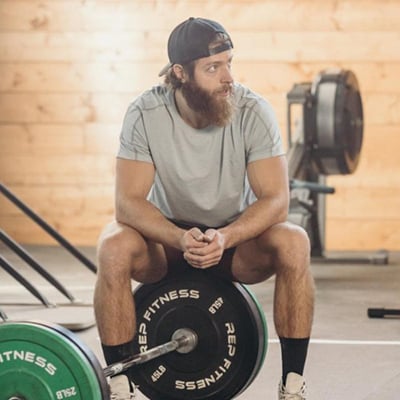
 Table of Contents
Table of Contents





